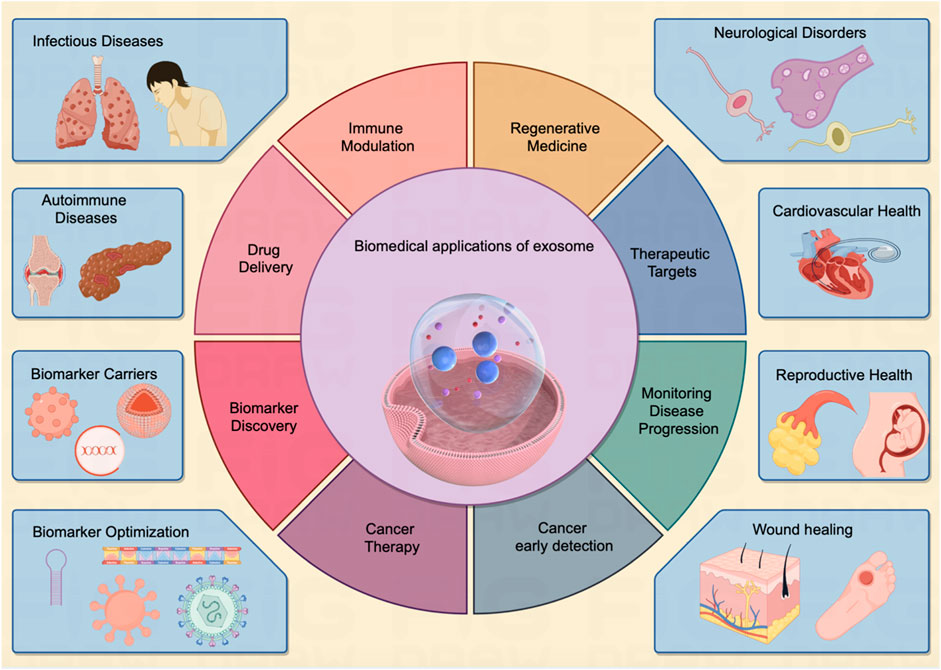Report on Viral Hepatitis: A Global Health Imperative in the Context of Sustainable Development Goal 3
Viral hepatitis, an inflammation of the liver caused by five distinct viruses (A, B, C, D, and E), represents a significant global health challenge affecting millions worldwide. The transmission and health risks associated with each virus type vary, necessitating a comprehensive public health response. Addressing this issue is a core component of the United Nations’ Sustainable Development Goal 3 (SDG 3), which aims to ensure healthy lives and promote well-being for all at all ages. Specifically, Target 3.3 calls for global action to combat hepatitis by 2030.
Analysis of Hepatitis Viruses and Public Health Implications
Hepatitis is characterized by inflammation of the liver, a vital organ responsible for filtering blood, processing nutrients, and removing waste. While often caused by viral infections, it can also result from alcohol consumption, medications, or autoimmune conditions. Symptoms are generally consistent across viral types and include fever, fatigue, nausea, abdominal pain, and jaundice (yellowing of the skin and eyes), though many individuals may be asymptomatic, especially in the early stages.
Hepatitis A (HAV)
- Transmission: Spreads primarily through the fecal-oral route, by ingesting food or water contaminated by an infected person. This highlights the intersection of SDG 3 with SDG 6 (Clean Water and Sanitation).
- Health Impact: Causes an acute infection that typically resolves without long-term liver damage in individuals with healthy immune systems.
- Prevention: A highly effective vaccine is available and recommended for all children, representing a key strategy for disease prevention in line with SDG 3 targets.
Hepatitis B (HBV)
- Transmission: Transmitted through contact with infected blood or other bodily fluids. Common routes include shared needles, mother-to-child transmission during birth, unprotected sexual contact, and sharing personal items like razors or toothbrushes.
- Health Impact: Often a “silent infection” that can become chronic, particularly if acquired at a young age. Approximately 90% of infected infants develop chronic hepatitis B, compared to only 5% of adults. Chronic HBV can lead to severe liver damage, cirrhosis, and liver cancer over several decades.
- Management: Antiviral medications can effectively suppress the virus, preventing disease progression to cirrhosis and allowing individuals to live long, healthy lives. This contributes to SDG Target 3.4, which aims to reduce premature mortality from non-communicable diseases.
Hepatitis C (HCV)
- Transmission: Spreads through contact with infected blood. Intravenous drug use and tattoos or piercings with unsterilized equipment are significant risk factors.
- Health Impact: Can be acute or chronic, often leading to long-term liver disease if untreated.
- Treatment: Major advancements in medicine have made Hepatitis C curable. Direct-acting antiviral treatments, typically lasting three to six months, have a cure rate of over 95%. This breakthrough is critical for achieving the SDG 3.3 goal of eliminating the hepatitis epidemic.
Hepatitis D (HDV) and Hepatitis E (HEV)
- Hepatitis D: An aggressive form of the virus that can only infect individuals who are already infected with Hepatitis B.
- Hepatitis E: Transmitted via the fecal-oral route, similar to Hepatitis A. It is more prevalent in regions with inadequate sanitation and can be a concern for international travelers.
Strategic Interventions for Prevention, Diagnosis, and Treatment
A multi-faceted approach is required to control and eliminate viral hepatitis, aligning directly with the objectives of SDG 3.
Prevention and Diagnosis
- Vaccination: Effective vaccines for Hepatitis A and B are foundational tools for prevention.
- Screening: Routine screening of all pregnant women for Hepatitis B is essential to prevent mother-to-child transmission. Targeted screening for at-risk populations is crucial for early detection of all hepatitis types.
- Diagnosis: Specific viral markers can be identified through simple blood tests, allowing for accurate diagnosis and appropriate management.
Challenges to Achieving SDG 3 Hepatitis Elimination Targets
Despite significant progress, several barriers hinder the global effort to combat hepatitis.
- Lack of Public Awareness and Stigma: Misconceptions about transmission, treatment, and the stigma associated with the disease prevent many from seeking testing and care.
- Asymptomatic Nature of Chronic Infection: Because the disease can be silent for decades, individuals often transmit it unknowingly and are diagnosed only after significant liver damage has occurred.
- Absence of a Mechanical Liver Substitute: Unlike kidney failure (dialysis) or heart failure (heart pump), there is no long-term mechanical support for a failing liver. This makes the prevention of end-stage liver disease through vaccination, early diagnosis, and treatment an absolute priority.
Addressing these challenges through public education, robust screening programs, and universal access to vaccines and curative treatments is essential to meet the global commitment to combat hepatitis as outlined in Sustainable Development Goal 3.
1. Which SDGs are addressed or connected to the issues highlighted in the article?
SDG 3: Good Health and Well-being
- The entire article is dedicated to hepatitis, a group of viral diseases that cause liver inflammation. It discusses the causes, symptoms, transmission, prevention, and treatment of these diseases. This directly aligns with SDG 3, which aims to ensure healthy lives and promote well-being for all at all ages. The article’s focus on preventing, diagnosing, and treating a major global health issue like hepatitis is central to the mission of SDG 3.
2. What specific targets under those SDGs can be identified based on the article’s content?
Target 3.3: By 2030, end the epidemics of AIDS, tuberculosis, malaria and neglected tropical diseases and combat hepatitis, water-borne diseases and other communicable diseases.
- The article explicitly focuses on combating hepatitis. It provides detailed information on different types (A, B, C, D, E), their transmission methods (foodborne, blood-borne), and their health impacts. The text highlights efforts to manage and cure the disease, such as antiviral treatments for Hepatitis B and a 95% cure rate for Hepatitis C, which are direct actions towards meeting this target.
Target 3.b: Support the research and development of vaccines and medicines for the communicable and non-communicable diseases that primarily affect developing countries, provide access to affordable essential medicines and vaccines…
- The article discusses key medical interventions. It states, “Vaccines are available for hepatitis A and B.” It also highlights the success of modern medicine, noting, “We have made tremendous progress curing hepatitis C with direct oral antivirals now.” This directly relates to the development of and access to essential vaccines and medicines to fight communicable diseases like hepatitis.
3. Are there any indicators mentioned or implied in the article that can be used to measure progress towards the identified targets?
Indicators for Target 3.3 (Combat hepatitis)
- Incidence of new hepatitis infections: While not providing a specific number, the article implies this indicator by discussing transmission routes (contaminated food, blood exposure, IV drug use) and prevention methods. Reducing the incidence rate is the primary goal of combating the epidemic.
- Number of people living with chronic hepatitis: The article distinguishes between acute and chronic infections, particularly for Hepatitis B, stating that “Around 90% of children who acquire it will develop chronic hepatitis B.” Tracking this number is crucial to measuring the burden of the disease.
- Screening coverage for specific populations: The article explicitly mentions a key screening practice: “All pregnant women are screened for hepatitis B to prevent transmission to newborns.” The percentage of pregnant women screened serves as a direct indicator of preventative efforts.
Indicators for Target 3.b (Access to vaccines and medicines)
- Hepatitis A and B vaccination coverage rate: The article mentions that “Hepatitis A is easily preventable with vaccination” and that pediatricians now recommend it for all children. This points to vaccination coverage as a key metric for progress.
- Hepatitis C treatment cure rate: The article provides a specific data point for this indicator, stating that treatment for Hepatitis C “has a 95% cure rate.”
- Hepatitis B treatment coverage: The article notes that for chronic Hepatitis B, “antiviral medications can suppress the virus and prevent the progression to cirrhosis.” The proportion of eligible patients receiving this treatment is an implied indicator of access to essential medicines.
4. Table of SDGs, Targets, and Indicators
| SDGs | Targets | Indicators |
|---|---|---|
| SDG 3: Good Health and Well-being | 3.3: End the epidemics of… hepatitis… and other communicable diseases. |
|
| SDG 3: Good Health and Well-being | 3.b: Support the research and development of vaccines and medicines… provide access to affordable essential medicines and vaccines… |
|
Source: utphysicians.com







